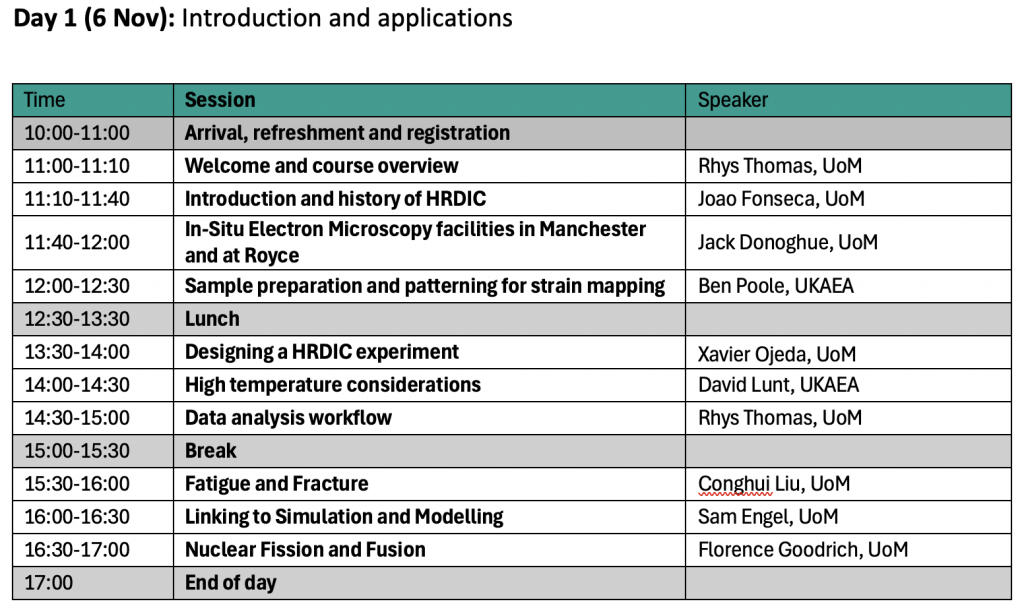This Course is FULLY BOOKED – Join the waiting list here.
Overview
This training course offers a complete introduction to high resolution digital image correlation (HR-DIC), covering sample preparation, image capture, experiment planning, and advanced data processing, including correlation with crystallographic data. As well as a taught component, participants will gain practical, hands-on experience and learn how to extract accurate displacement and strain data, validate results, and interpret them in the context of materials performance.
Case studies from published research will demonstrate successful applications of HR-DIC and showcase its potential in advanced materials characterisation. The course also provides a platform for attendees to share experiences, explore new applications, and discuss best practices. Opportunities to access in-situ testing facilities through Royce’s access schemes will be highlighted, supporting wider adoption across academia and industry. Participants will benefit from expert instruction and a guided tour of Royce’s state-of-the-art in-situ testing facilities.
This Course is FULLY BOOKED – Join the waiting list here.
Background and motivation
Digital Image Correlation (DIC) has revolutionised how we characterise material deformation, offering full-field, non-contact strain mapping that reveals how local microstructural features influence bulk mechanical behaviour – insights that are vital for advancing high-performance materials. While traditionally performed using optical microscopy, advancements in speckle patterning have enabled routine use of scanning electron microscopes (SEMs), significantly enhancing spatial resolution and allowing features such as individual slip bands to be resolved.
Recent integration between SEM manufacturers, analytics providers, and tensile stage developers has enabled automated, in-situ deformation experiments at elevated temperatures. The Henry Royce Institute supports this capability through world-class facilities, including two Tescan and Newtec In-Situ Testing (TANIST) systems, as well as an additional nuclear specific platform at the Dalton Cumbrian Facility. These platforms combine SEM imaging with in-situ tensile and heating stages, supported by Oxford Instruments EDS and EBSD systems for crystallographic and chemical analysis.
Delivered by the Henry Royce Institute for Advanced Materials, this course aligns with Royce’s mission to accelerate materials innovation through cutting-edge characterisation. It also leverages the University of Manchester’s internationally recognised expertise in HR-DIC, developed through years of pioneering work in nuclear, aerospace, and structural materials.
Audience
This course is designed for researchers in the materials science community who are interested in applying High-Resolution Digital Image Correlation (HR-DIC) and learning how to effectively analyse the resulting data. It is well-suited to PhD students and early-career researchers who are new to the technique, as well as those seeking to deepen their understanding or expand their experimental capabilities.
Industry professionals and SME scientists are also warmly encouraged to attend – particularly those exploring advanced materials characterisation for potential collaborative projects or facility access through Royce support schemes such as the Industrial Collaboration Project.
Learning outcomes
Following the course participants should be able to:
- Understand the key principles of HR-DIC and the requirements for successful experiments
- Prepare samples and generate high-quality speckle patterns
- Capture and manage high-resolution image datasets
- Relate HR-DIC results to microstructural features and mechanical behaviour using DefDAP
Programme


Organisers
- Rhys Thomas – Royce
- Jack Donoghue – Royce
November 7 2025



